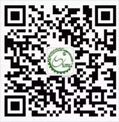搜索


主讲人:唐克轩教授
报告时间:6月28日(周五)9:00-9:45
报告地点:闵行校区生物药学楼1号楼105会议室
联系人:马钢副教授
.png)
主讲人简介:
Dr. Tang Kexuan is a Distinguished Professor, Director of Plant Biotechnology Research Center, Director of Fudan-SJTU-Nottingham Plant Biotechnology R&D Center at Shanghai Jiao Tong University. He serves as Chairman for the Artemisinin Industrial Alliance in China. He received his Ph.D from Nottingham University in 1996, and an honorary doctorate from Linnaeus University, Sweden in 2012. His research interests lie in plant metabolic regulation and engineering, plan bioreactors and plant molecular biology. In recently years, Prof. Tang presides over 20 research projects including the Bill & Melinda Gates Foundation, the Rockefeller Foundation, China National “863” High-Tech Project, China Transgenic Plant Research and Commercialization Project, China National “973” Basic Research Program Project, Sino-UK Collaborative Project, etc. He has engineered Artemisia annua plants with enhanced artemisinin contents, and engineered Catharanthus roseus with increased vinblastine contents. They were the first GM medicinal plants in field trials in the world. He has identified a number of transcription factors from A. annua which influence artemisinin accumulation and trichome development. He has published over 300 papers in international scientific journals such as SCIENCE ADVANCES, PROCEEDINGS OF THE NATIONAL ACADEMY OF SCIENCES USA, CELL RESEARCH, etc. He has chief-edited two books, Plant Biotechnology, and Biotechnology of Traditional Chinese Medicine. He has over 200 patents filed or granted.
报告简介:
Artemisinin, an endoperoxide-containing sesquiterpene lactone isolated from Artemisia annua L., is extensively used in treating malaria. The artemisinin-based combination therapy (ACT) is recommended by World Health Organization (WHO) to combat the drug-resistant malaria. China's pharmacologist Youyou Tu received 2015 Nobel Prize in Physiology or Medicine due to the finding of artemisinin. However, the artemisinin content in A. annua is low (0.01-1% dry weight), and the demand for artemisinin is huge (180-200 tons/year). In addition, although the artemisinin biosynthesis in A. annua is almost elucidated, how artemisinin biosynthesis is regulated is poorly known. I will present recent achievements in my researh group in the development of multiple metabolic engineering strategies to increase artemisinin content in A. annua. Specifically, we have developed A. annua lines with extremely high content of artemisinin (up to 2% DW), which are under the field trial in Africa. Our achievements, combined with efforts of the newly established Artemisinin Industrial Alliance comprised of all major Artemisia growers, artemisinin and ACT producers in China, will fundamentally solve the unstable artemisinin supply problem and guarantee the world the constant supply of artemisinin at low price to combat malaria.



 首页
首页

 学院概况
学院概况

 师资队伍
师资队伍

 人才培养
人才培养

 招生就业
招生就业

 科学研究
科学研究

 平台基地
平台基地

 党群工作
党群工作

 校友之家
校友之家

 安全工作
安全工作

 网上办事
网上办事

 当前位置:
当前位置: